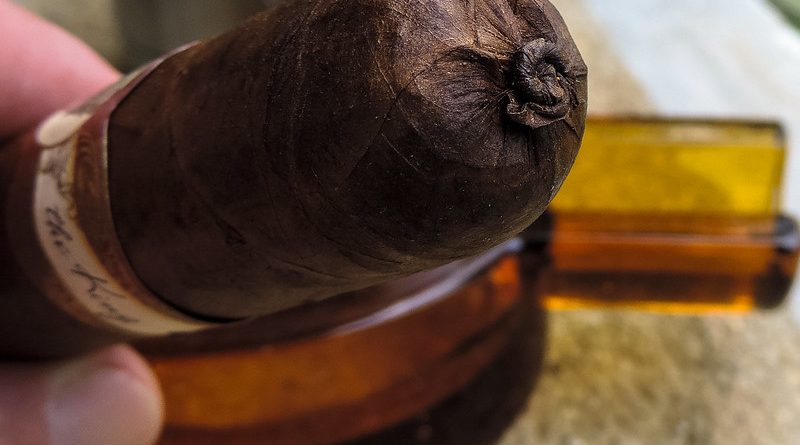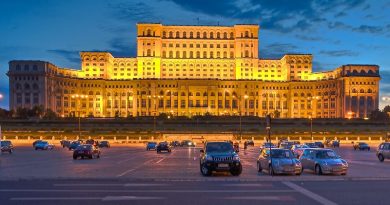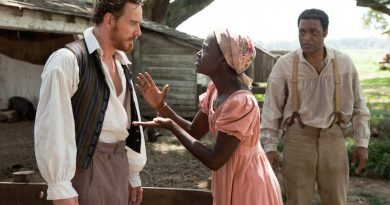A Short History of The Cigar
Cigarsmoking was first observed by European explorers when Columbus encountered the indigenous people of Cuba in 1492.
While the practice was common in the Carribean, it was completely unfamiliar too the Europeans . A Dominican friar travelling with Columbus described it thus:
Men with half-burned wood in their hands and certain herbs to take their smokes, which are some dry herbs put in a certain leaf, also dry, like those the boys make on the day of the Passover of the Holy Ghost; and having lighted one part of it, by the other they suck, absorb, or receive that smoke inside with the breath, by which they become benumbed and almost drunk, and so it is said they do not feel fatigue. These, muskets as we will call them, they call tabacos.
I knew Spaniards on this island of Española who were accustomed to take it, and being reprimanded for it, by telling them it was a vice, they replied they were unable to cease using it. I do not know what relish or benefit they found in it.
Tobacco would become one of the primary products fueling colonisaton and also became a driving factor in the enslaving of Africans.
The Spanish introduced tobacco to Europeans in about 1528, and by 1533, Diego Columbus mentioned a tobacco merchant of Lisbon in his will, showing how quickly the traffic had sprung up. The French, Spanish, and Portuguese initially referred to the plant as the “sacred herb” because of its alleged medicinal properties.
In time, Spanish and other European sailors adopted the practice of smoking rolls of leaves, as did the Spanish and Portuguese conquistadors .
Smoking primitive cigars spread to Spain, Portugal, and eventually France. Later, tobacco use spread to the Italian kingdoms, the Dutch Empire, and, after Sir Walter Raleigh’s voyages to the Americas, to Great Britain. Tobacco smoking became familiar throughout Europe—in pipes in Britain—by the mid-16th century.
Spanish cultivation of tobacco began in earnest in 1531 on the islands of Hispaniola and Santo Domingo. In 1542, tobacco started to be grown commercially in North America, when Spaniards established the first cigar factory in Cuba. Tobacco was originally thought to have medicinal qualities, but some considered it evil. It was denounced by Philip II of Spain and James I of England
Cigar smoking became popular in the US after the American Revolution.
Then the population of Havana boomed after the king of Spain declared free trade in 1818 in the country, which remained a Spanish colony until 1898. It was during that period that many of Cuba’s famous cigar brands were created.
A big factor in the flavor of a cigar is the terroir where the tobacco is grown. Cuban soil, especially in the westernmost part of the island, Vuelta Abajo, was traditionally rich in nutrients, particularly magnesium, calcium and iron. These elements worked harmoniously to create a relatively sweet and very popular tobacco,
Towards the end of the 18th century and in the 19th century, cigar smoking was common, while cigarettes were comparatively rare.
The Process
Tobacco leaves are harvested and aged using a curing process that combines heat and shade to reduce sugar and water content without causing the larger leaves to rot. This takes between 25 and 45 days, depending upon climatic conditions and the nature of sheds used to store harvested tobacco. Curing varies by type of tobacco and desired leaf color. A slow fermentation follows, where temperature and humidity are controlled to enhance flavor, aroma, and burning characteristics while forestalling rot or disintegration.
The leaf will continue to be baled, inspected, un-baled, re-inspected, and baled again during the aging cycle. When it has matured to manufacturer’s specifications it is sorted for appearance and overall quality, and used as filler or wrapper accordingly. During this process, leaves are continually moistened to prevent damage.
Quality cigars are still handmade. An experienced cigar-roller can produce hundreds of good, nearly identical cigars per day. The rollers keep the tobacco moist—especially the wrapper—and use specially designed crescent-shaped knives, called chavetas, to form the filler and wrapper leaves quickly and accurately.Once rolled, the cigars are stored in wooden forms as they dry, in which their uncapped ends are cut to a uniform size.From this stage, the cigar is a complete product that can be “laid down” and aged for decades if kept as close to 21 °C (70 °F) and 70% relative humidity as possible. Once purchased, proper storage is typically in a specialized cedar-lined wooden humidor.
Cuba v The World
In 1869, Spanish cigar manufacturer Vicente Martinez Ybor moved his Principe de Gales(Prince of Wales) operations from Havana, to Key West, Florida to escape the turmoil of the Ten Years’ War. Other manufacturers followed, and Key West became an important cigar manufacturing center.
This move laid the basis for the migration of the industry and its development outside Cuba by The Cuban diaspora over the next 100 years.
In the late 19th and early 20th centuries huge cigar making operations were set up in Florida and New York attracting thousands of Cuban and Spanish tabaqueros who would hand roll hundreds of millions of cigars .
Edi Nearly all modern premium cigar makers are still members of long-established cigar families, or purport to be, most originally rooted in the historic Cuban cigar industry. The art and skill of hand-making premium cigars has been passed from generation to generation. Families are often shown in many cigar advertisements and packaging.
Wherever they were rolled, all cigars were made entirely by hand until around 1920, when the first cigarmaking machines appeared, and they became more common after the Great Depression. In the meantime, cigarettes came on the scene, as they were included in the mess kits of G.I.s during the First World War, and began edging aside cigars in popularity. By the mid-1920s they had become the nation’s most popular form of tobacco.
Castro
Fidel Castro’s rise to power in Cuba in the late 1950s would forever change the world of cigars. In 1960, Castro seized control of Cuba’s cigar and tobacco industry, and his regime plucked the country’s cigar gems: it nationalized the Hoyo de Monterrey factory, home of Punch, Belinda and the Hoyo brand; seized the H. Upmann factory from owners Menendez and Garcia, taking with it Cuba’s famous Montecristo and H. Upmann brands; and grabbed the emblematic Partagás Factory from owner Ramón Cifuentes. “They came inside, and said, ‘We’re here to intervene the company,’ ” Cifuentes told Cigar Aficionado in an interview. “And they didn’t allow me to take anything.”
The nationalization of Cuba’s cigar industry led to the exile of many of its famed tobacco and cigar men, which led to the rise of the non-Cuban cigar industry.
The Cuban diaspora took their cigar making skills honed over centuries. with them – And they took Cuban tobacco seeds with them too and created new industries in the Dominican Republic, Honduras and Nicaragua which all have thriving cigar industries today .
When U.S. President John F. Kennedy signed an embargo prohibiting nearly all trade between Cuba and the United States in 1962, it forced cigarmakers to reinvent their blends. Cuban leaf, the lifeblood of the cigar industry, was now off-limits to American smokers.
Cuba’s exiled cigarmakers traveled far and wide searching for new places to roll. The Menendez family went to the Canary Islands to make cigars, and soon launched Montecruz, a copy of the Montecristo brand it had lost in Cuba. General Cigar turned to Jamaica, where cigarmaking had been a big business during the Second World War.
Many of Cuba’s exiled cigarmakers made deals with American cigar companies to license or sell their cigar brand names, resulting in non-Cuban versions .
Tobacco seeds were brought around the world, and propagated in various countries. At that time tobacco pioneers had success planting Cuban seeds in Honduras. In 1967, Carlos Toraño Sr. brought Cuban seeds to the Dominican Republic, a nation just removed from civil war, and helped improve the quality of the country’s tobacco, which was mostly grown for cigarettes at the time.
With Dominican Republic cigars currently ubiquitous, it may be hard for a modern-day cigar lover to believe that 40 years ago the Dominican Republic made very few cigars for export.
In the 1970s, most of the imported cigars enjoyed in the United States were rolled in the Canary Islands, Jamaica and Mexico, and America still made a large number of cigars.
By the mid-1980s, the Dominican Republic was a hot spot for making cigars. In the 1990s, it became the center of the cigar universe.
Imports of premium, handmade cigars began to climb towards the end of 1992.The American cigar market was turned on its head, and would go through a period of unimaginable growth. Premium cigar imports rose by 3.7 percent in 1992, 9.7 percent in 1993, 12.4 percent in 1994, 33.1 percent in 1995 and soared 66.7 percent in 1996, to more than 293 million cigars. Between 1992 and 1996, the market for fine cigars nearly tripled.
The effects of the cigar boom reached Cuba as well. Consumers flocked to Cuban cigar stores and bought every cigar they could find. On a trip to Havana in early 1996, editors of Cigar Aficionadoe magazine visited nine cigar shops and couldn’t find a double corona, Montecristo No. 2 or Partagás Serie D No. 4. Cuba, which had produced fewer than 60 million export-quality cigars in 1993 and 1994, vastly increased its production. Cuban cigar exports reached 100 million units in 1997, and officials announced the long-term goal of increasing further to 200 million cigars by the year 2000.
Today, the myriad companies that make, market, distribute and retail cigars worry not about who will buy their cigars, but if the government will cripple the industry with over regulation and taxes. The possibility that the Food and Drug Administration will slap restrictions on the industry, increasingly higher taxes and fewer and fewer cigar-friendly venues are the worries of the moment, and some fear that the government could ruin the cigar business.
But the legacy of the cigar boom can be seen in the heir apparents to some of the world’s most famous cigar brands whose family members remain in the industry today




